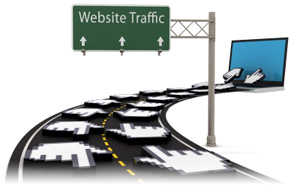 Internet marketing continues to evolve, becoming both more viable and more complex. Customer relationship management software (CRM) has become a must due to the complexity. It plays an important role at all stages of the sales funnel. With a solid CRM system in place, your Internet sales and marketing teams can more effectively manage contacts whether they’re in the engage, convert, or nurture stage. Where the sales funnel was once the realm of the sales and marketing team, today’s Internet marketing strategies require a robust CRM solution – and IT involvement.
Internet marketing continues to evolve, becoming both more viable and more complex. Customer relationship management software (CRM) has become a must due to the complexity. It plays an important role at all stages of the sales funnel. With a solid CRM system in place, your Internet sales and marketing teams can more effectively manage contacts whether they’re in the engage, convert, or nurture stage. Where the sales funnel was once the realm of the sales and marketing team, today’s Internet marketing strategies require a robust CRM solution – and IT involvement.
To add to the complexity of CRM and the Internet sales funnel in general, social media has emerged as a major channel for customer service, tech support, sales, and marketing alike. Integrating social media into your Internet marketing CRM program allows everyone to see the larger picture. For example, is a contact complaining about your service? Is she raving about your products? Has a contact expressed a need that your company can fill? By tapping into these channels, your sales, marketing, customer service, and tech support teams can respond appropriately.
Opinions vary on the best approach to CRM with some Internet marketing experts favoring a single, shared database for both marketing and sales and others preferring separate databases to ensure that leads are managed properly according to where they are in the Internet sales funnel. Other experts advocate using marketing automation software to first clean up the sales funnel data before importing it into CRM software.
Can a single CRM solution handle everything your Internet sales and marketing teams need? The answer varies from company to company. In most cases, sales and marketing need to work with the same data and contacts; however, they tend to interact with that data differently.
Integrated CRM solutions that include marketing automation and email marketing software may be the optimal choice by allowing sales and marketing to access shared data without duplication or conflicts. For example, with an integrated Internet marketing CRM platform, when an email subscriber unsubscribes from an email marketing campaign the contact will be removed from the mailing list and relevant information appended to the contact’s record.
No matter which option makes the most sense for your Internet marketing strategy, one thing is clear: you need IT support. With multiple databases, automation software, and lead sources (such as cold calling, opt-in lists, special events, and social media channels), managing the sales funnel requires software and systems that perform to their fullest potential.
While many Internet marketing platforms are offered as “software as a service” and imply that minimal IT intervention will be required, aligning marketing with IT is essential. While installation, updates, and support tasks may be minimal with cloud-based Internet sales solutions, IT should be involved in selecting the solution to make sure it is compatible with existing systems along with the company’s security and privacy policies. If your CRM solution includes social media information from contacts based in European Union countries, stricter privacy regulations may apply.
By including IT in the Internet sales and CRM conversation, you’ll benefit from a broader perspective that extends beyond the sales funnel and better aligns with the organization’s objectives. In addition, IT professionals tend to have more experience in purchasing software. Thus, they may be better equipped to evaluate the terms and conditions and negotiate the contract.
No matter which CRM solution you use to nurture prospects through the sales funnel, stronger Internet sales require alignment between your Internet marketing, sales, and IT teams.














